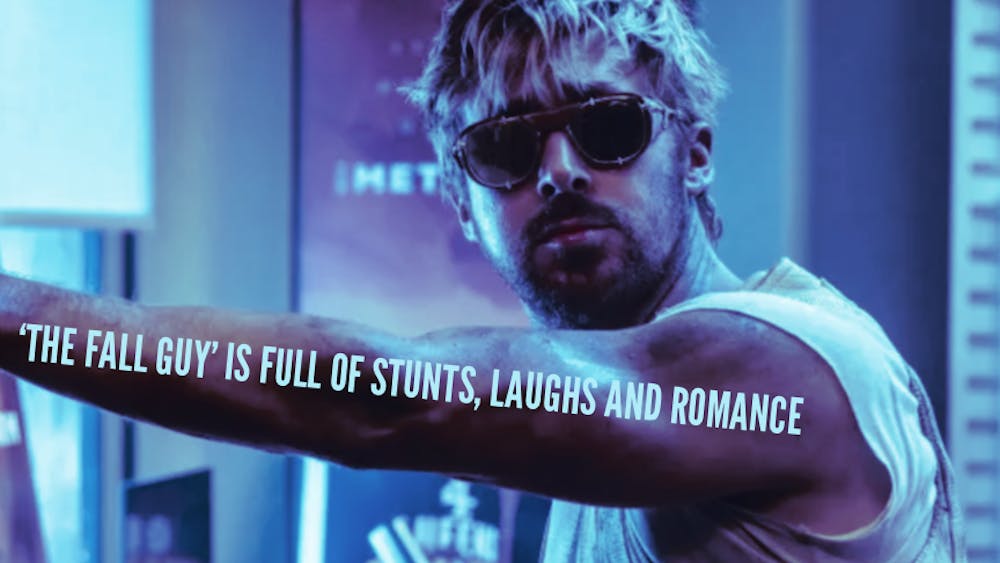
Keri O'Mara
Keri O'Mara
Richard Linklater’s epic 12-year project "Boyhood" finally arrived this summer. It is still in theaters and is screening at the Browning Cinema in the DeBartolo Performing Arts Center from September 19-21. If you haven’t seen it yet, you’ve probably heard only good things about it. Critics and fans are declaring the film one of the greatest ever made, groundbreaking for cinema and an instant classic that managed to capture life itself.The unanimous praise is well-deserved and necessary for expanding the audience of an independent film (only screened in select theaters, "Boyhood" was never going to come close to the blockbusters in the summer box office). All the same, the hype has perhaps gotten to the point where we are failing to acknowledge that certain elements of "Boyhood" simply can’t be compared to those of other great films because they’ve never been done before. Maybe, at least for now, lets just enjoy "Boyhood" as art in its own category.
Imagine the planning and foresight needed. It was surprising that the film company IFC Productions was still around after 12 years and that producer Jonathan Sehring kept the same job. The cast could not sign contracts because making exclusive personal services contracts in excess of seven years is illegal. Linklater used 35mm film to make sure the look of the film stayed the same over all 12 years.
When shooting started, Linklater explained he had a sort of “structural blueprint” but not the dialogue. The four principal actors, Ellar Coltrane as Mason Evans, Jr., Patricia Arquette as his mother Olivia, Lorelei Linklater as his sister Samantha and Ethan Hawke as his father Mason Sr., were involved each year of filming and all contributed to the writing process. Linklater’s daughter once asked if her character could die and be written out so she could leave. While the scenes are not improvised, certain parts were written the night before filming.
Although incredible, this spontaneity makes sense. The actors had to get back into character for only a few weeks each year. But they also have to acknowledge that outside of their characters they have changed as people. Just as Linklater’s life influenced many elements of the film, so did the lives of the main actors, both prior to filming and during the 12 year filming process. The film is an experiment that hasn’t quite been tried before.
Why was "Boyhood" so well received? It is a story about growing up and parenting. Every member of the audience can relate in some way. Linklater also aims to keep an entertaining pace. He does this better than fellow Austin director Terrence Malick, whose "The Tree of Life" is also a semi-autobiographical epic about family and growing up, but was more experimental and isolated some of its audience.
Linklater shows immense skill in anticipating certain cultural phenomena from the 2000s decade. Mason grows up in Texas, so Americans generally but especially Texans will better understand certain experiences or recognize specific film locations. When the kids say the Texas pledge in school it is surreal, one of those things you say everyday in elementary school but never really think about and then completely forget when you are older. Linklater captures the magic and excitement of Austin, a city of music, students and late-night queso as if he knew all along that many viewers would go through the same things his characters do.
Nevertheless, Linklater thinks about what is going to define the decade. The soundtrack is appropriate — songs that fit the characters’ personalities but were also on the radio, played at parties or school dances enough for us to remember them. Often the songs open with the new scene and an older Mason, which helps to drive the transition to a new year within the film. We might remember discussing “Star Wars” or “Harry Potter,” our sisters singing Britney Spears or “High School Musical,” the Afghanistan/Iraq War, the presidential elections and new technology. We remember being told it’s too difficult to be a photographer, musician or dancer. We remember our parents fighting or getting divorced and navigating the waters of relationships or bullying in school.
And then we start to see our own lives in “Boyhood” and it is nostalgic and powerful. The film is a time capsule and a way to watch ourselves grow up again. Maybe “Boyhood” was so special to people that they felt a sort of desperate impulse to respond to their post-viewing emotions and explain how Linklater and his crew could accurately depict their generation so well (and thus came the wave of praise). Nevertheless the film also owes its success to honest acting, great contrasts of humor and intense drama and a realistic story.
Typical of Linklater, the plot is not always the driving force of “Boyhood.” Some supporting characters or conflicts disappear suddenly as the main characters move on with their lives. But in the end the lack of structure works because “Boyhood” is a collection of moments for us to share with the director and actors. Linklater didn’t try too hard to figure out whether “people seize moments or if moments seize them.” He didn’t force any scenes, he let them come naturally over 12 years, neither improvised nor constrained. In that sense, “Boyhood” stands alone as a unique and intimate understanding between director and audience.













